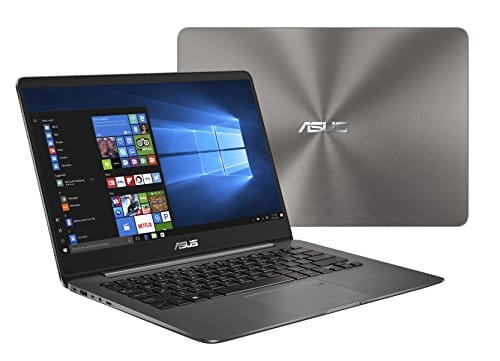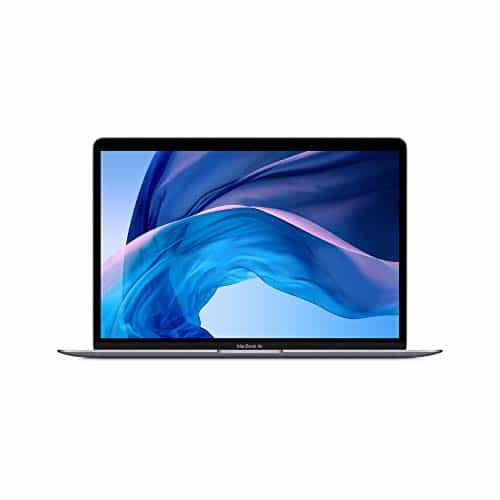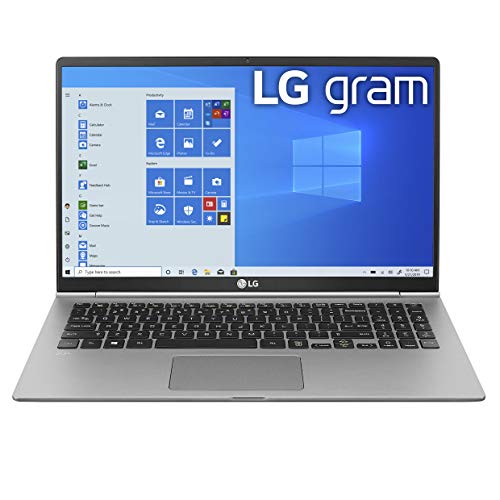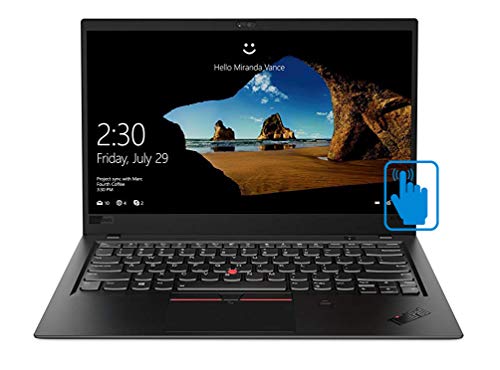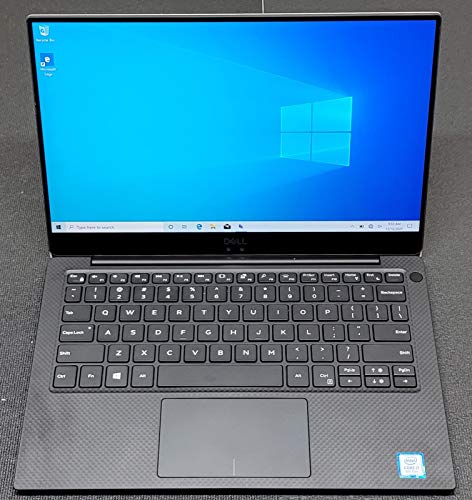5 Excellent Laptops for Stock Trading Available Now!
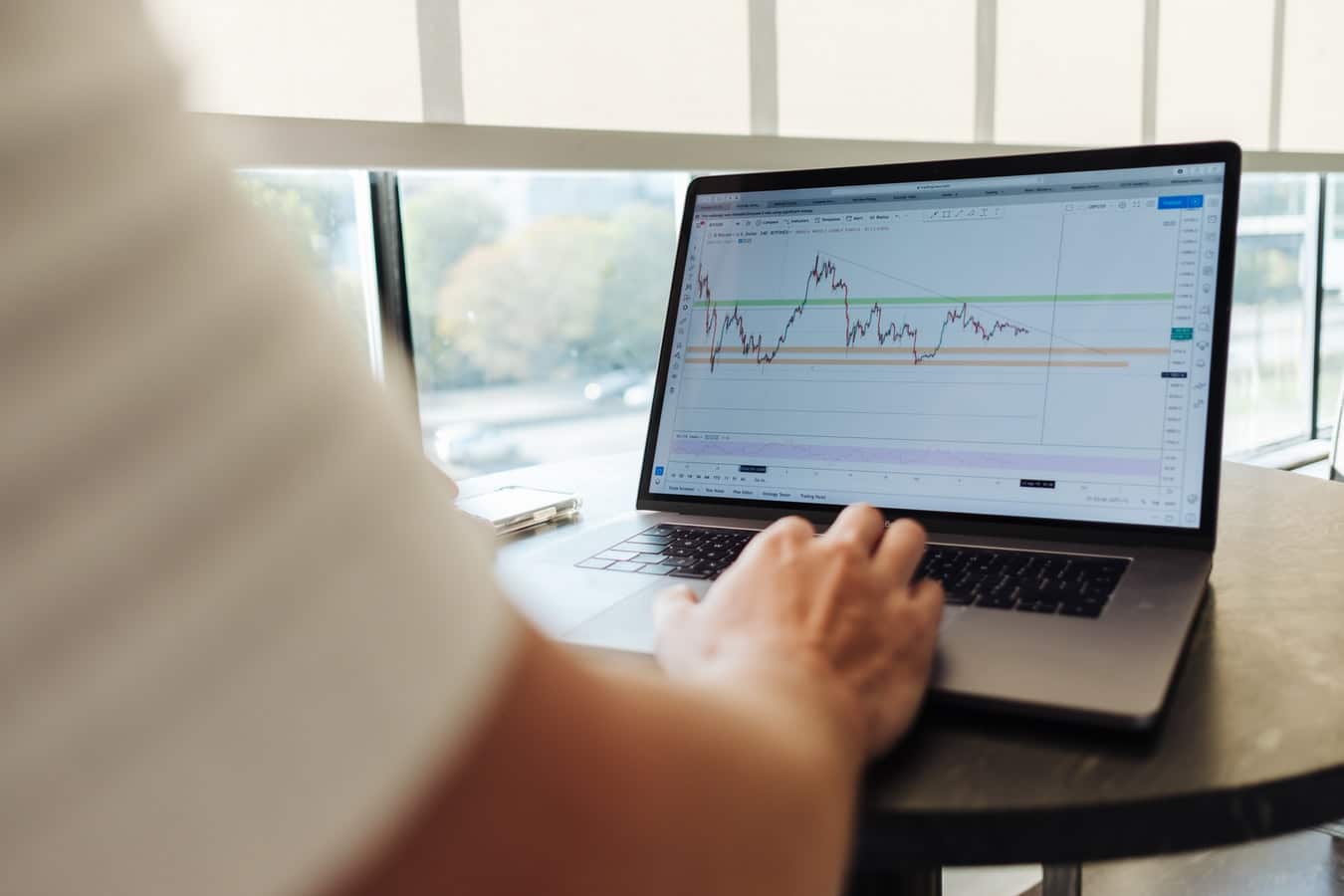
If you’re a busy trader, you haven’t got all day to find the best trading hardware.
You’re probably too busy either shoring up your trading knowledge or keeping an eye on the news and the stock market to see how it’s moving.
When trading, you’re going to need a laptop with a good processor so that it’s agile and can browse quickly, as well as run the programs that traders tend to have running at all hours of the day.
Below you’ll find our favorite five laptops for trading stocks, so take a look and decide if any of them meet your standards. We’ve written a write-up under each product, so you can see the relevant specs of each machine and what they’ll mean for your stock trading.
At the bottom of this page, we’ve also included a buyers’ guide where you can learn more about the laptop specs you should pay attention to when buying.
In a Hurry?
If you’re itching to get back to your trades, you’re better off looking at our top choice. If you like it, you can buy it and boom, no more time spent on shopping.
Check out the ASUS ZenBook 14 if you’re in a hurry, it’s the laptop we liked the most and it has the features to back up its top position on our list. Check out what we liked about it below:
- First, the specs of the ZenBook 14 are simply the best out of the other laptops on our list. It has an 8th Generation Intel Core i7 processor and a generous 16GB of RAM.
- Second, it has a vast but secure storage space. It uses a 512GB SSD that’s protected by a Windows Hello compatible fingerprint reader, so only you get into the laptop.
- Third, it’s a light laptop thanks to its aluminum casing. In that casing are multiple ports for HDMI, USB, and SD cards.This means moving information from and to this laptop is easy, plus you can connect handheld devices to it.
Best Laptops for Stock Trading
1. ASUS ZenBook 14
The ASUS ZenBook 14 is our most recommended laptop for stock trading. It has the most powerful specs of any laptop on this list, so it wasn’t a hard call.
It’s also from a known brand and is a Windows machine, so more people should gel with it than machines running other Operating Systems.
What makes the ASUS ZenBook 14 our easy favorite is the fact it has an 8th Generation Intel Core i7-8550U processor along with 16GB of RAM.
This CPU is one of the best here, and the i7s were the best until the recent i9s started coming with laptops.
By getting an i7, you get enough performance for a more affordable price.
The 16GB of RAM is ideal for stock trading and other activities that’ll involve a lot of open tabs or programs chugging along in the background.
The 512GB of storage is also ideal, being as beefy an SSD as you can get without getting into the pricier models that have 1TB storage.
Besides, you can always use other means of storage and just keep the executable programs on this SSD, so that they can load faster.
This larger storage space should have you covered for the foreseeable future.
Being one of the more advanced ZenBooks, it has a fingerprint reader so only you can access the laptop.
It uses Windows Hello to enable a one-touch login that’s quick, easy, and super secure.
It also adds some peace of mind when using this laptop in public areas, since your data can be safe.
As for the casing of this laptop, it’s an aluminum casing that makes the entire machine just shy of three pounds.
There’s also a bunch of cable ports, like HDMI and USB-C, as well as an SD card slot.
This means you can attach handhelds or peripherals to this laptop if you’d prefer.
- 14-Inch wide-view Full-HD nano-edge bezel display in 13.3" chassis with Windows 10 Pre-installed
- Latest 8th generation Intel i7-8550U 1.8 GHz Processor (Turbo to 4.0 GHz)
- Fast storage and memory featuring 512GB SSD with 16GB DDR3 RAM
- Extensive connectivity with micro HDMI/USB Type C, 802.11a/c WiFi, and SD Card Reader
- Sleek and light weight 2.75 lbs aluminum body for comfortable portability
2. Apple MacBook Air
Our runner-up laptop for stock trading is the Apple MacBook Air.
We all know who Apple is and the products they tend to offer, so you can be sure that you’re getting a functional product that can handle the workloads you’d want to throw at it.
We’ve ranked this laptop here because, while it may not have the greatest specs, it’s affordable, from a reliable company, and will be able to handle stock trading at most levels.
So, what exactly is in the MacBook Air? The processor isn’t much to write home about, being a 10th Generation Intel Core i3 processor.
While being one of the later generations, an i3 won’t outgun an i5 or i7 processor, but the intended use of MacBooks is so streamlined that this doesn’t become an issue.
Assuming you aren’t overloading it or running too much in the background, you’ll be able to run stock trading software on this just fine. It’ll be easier to over-exert the MacBook since it has 8GB of RAM.
With the Air, you have a choice in how much storage space you get. The more budget-friendly version will get you 256GB of SSD space, which is fine, but we’d advise you to use external or cloud storage to keep the SSD agile.
That’ll allow you to get the quick-loading benefits of SSDs when running trading programs.
If you want your trading data to be secure, the MacBook Air also has Apple’s Touch ID fingerprint scanner that only provides positive identification when it finds a matching print.
These kinds of security measures are best when you plan to use the laptop in public, which you can do thanks to the eleven-hour battery life the MacBook has.
In practice, this eleven-hour figure will likely reduce to seven or eight hours, but that’s still enough for a day out.
The brightness when in dim conditions isn’t great, so this is definitely better when you’re in a well-lit environment.
- Stunning 13.3-inch Retina display with True Tone technology
- Backlit Magic Keyboard and Touch ID
- Tenth-generation Intel Core i3 processor
- Intel Iris Plus Graphics
- Fast SSD storage
3. LG Gram
This next recommendation is for those of you who need a laptop you can keep with you all day long.
The LG Gram isn’t the most powerful in terms of processing power when compared to the next laptop below, but the reason we’ve set it in the middle of this list is that it blows every single laptop out of the water where battery life is concerned.
So how long does the LG Gram run? Twenty-four to twenty-five hours.
On paper this is almost double the eleven to fourteen hours that most notebooks claim, though remember that laptop use saps away a machine’s battery lifespan, making the Gram even more impressive.
As said, we’d advise you to pick this if you do want a traveling companion for on-the-go trading. The Gram’s powerful battery barely adds extra weight, either, since this laptop only weighs just over two pounds.
Besides its battery lifespan, it’s a smaller laptop that offers a lot of choices in terms of specs. If you get the 2019 version, you’ll get an 8th Generation Intel Core i5 processor and a 256GB SSD.
This CPU is enough for stock trading, though not best and weaker than the i7 and i9 processors that many modern notebooks have.
The 2020 version will have a 10th Generation i5 processor, which is better, and you also have a choice between 256GB or 512GB of SSD storage.
The use of external storage will make a 256GB SSD a non-issue, but the 512GB is preferable. No matter which version you pick, you’ll get 8GB of RAM.
This is limited, so you won’t be able to have as many browsing tabs or cumulative programs running.
It has a 15.6” FHD LCD screen, so even though this is the humbler option in terms of specs, it offers a lot of display space for you to play with.
This can be invaluable when you need to have a lot of information on the screen at once.
It should be noted that the Gram doesn’t have some of the privacy features that others on this list have, like a fingerprint reader.
- 15.6” Full HD (1920 x 1080) IPS LCD Screen
- Windows 10 Home( 64bit)
- Intel 10th Generation i5-10210U CPU with Intel UHD grapics
- 8GB DDR4 RAM and 512G M.2 NVMe SSD
- Up to 21 Hour Battery Life (72Wh Lithium Battery)
4. Lenovo ThinkPad X1 Carbon
Next, we have the Lenovo Thinkpad X1 Carbon.
The Thinkpad series is Lenovo’s response to the slim notebooks that have dominated the laptop market in recent years, like the ASUS ZenBooks or the Apple MacBooks that we featured earlier in this list.
Being one of the later Thinkpads released, the X1 Carbon Ultrabook uses a powerful 7th Generation Intel Core i7-8565U processor.
We’ve seen i9 Thinkpads released too, but an i7 CPU will do you just fine. With this model, you get more RAM than usual with 16GBs in the form of DDR3 RAM, which should let you do more at once.
Where you’ll get 16GB of RAM, you’ll also get 512GB of native SSD storage, which is the amount of storage we’d recommend for a work notebook.
SSD storage is also better for quick-loading intensive programs or spreadsheets stuffed with information.
The Thinkpad X1 Carbon uses a 14” backlit LED screen that has anti-glare properties, so you can use it under sunlight or in artificially lit office spaces. 14” is slightly larger than the 13.3” screens a lot of notebooks have.
It may not seem like much of an increase, but you’ll notice every additional centimeter when you’re filling the display space with tabs and charts.
If you plan on using this laptop in dimly lit conditions, the keyboard also has a backlight function that you can use to see what keys you’re striking.
Integrated into the typing interface is a fingerprint reader that you can use with Windows Hello to access the laptop. This means prying eyes can’t access the laptop without access to your fingerprint.
As for some of the downsides that come with the Thinkpad X1, it can produce a rattling noise. This seems to be from certain screws that hold the speaker in place, which you can replace if you have the know-how, but it can be annoying nonetheless.
- Intel Core i7-8565U Processor 1. 8GHz, Up to 4. 6GHz Turbo, Quad Core
- 14" Anti-glare LED Backlit IPS FHD (1920 x 1080) Display
- 16GB LPDDR3 2133MHz RAM, 512GB Solid State Drive
- Backlit Keyboard, Fingerprint Reader, Windows 10
- Intel Integrated 620 Graphics, HDMI, 802. 11 Wireless-AC
5. Dell XPS 13 9370
The Dell XPS 13 9370 is the final laptop on our list, mainly since it just doesn’t measure up to the rest in terms of specs when compared to their price point, but it’s still a valid option for those who need a slightly cheaper laptop that can run stock trading software.
To get a negative point about this product out of the way, the fans on this thing can get loud in comparison to the other laptops on this list.
It may be the humbler option here, but it packs an 8th Generation Intel Core i7-8550U processor along with around 8GB of DDR3 RAM.
This is on the lower side of RAM capacity for a trading laptop, in our opinion, as this won’t support as many open tabs or concurrently running programs.
The more that’s happening on your laptop, the more RAM you need, and 8GB may limit you if you’re a fan of tab stacking during your market research.
As for space inside the Dell XPS, it has a 256GB SSD. This is also on the lower side for modern notebooks but, if combined with an external hard drive or a user who has a mind for smart data allocation, this shouldn’t be a problem.
Keeping the SSD free and clear from over-storage is key to getting the fast loading benefits that SSDs provide.
This XPS uses a 13.3” 4K UHD InfinityEdge touchscreen, a seemingly borderless display that allows you to pull up more documents, browsing windows, and charts onto the screen without feeling cramped by the physical borders of your screen.
You can also use the touchscreen function to sort through them with your own hand instead of a clumsy touchpad.
Speaking of touch, the Dell XPS is compatible with Windows Hello, meaning that it has a fingerprint reader built into the case.
This collaborates with Windows Hello or other authentication software so that the laptop only opens up when you’ve positively identified yourself.
This is handy for those who use their laptops in public, who’ll want to keep their literal trade secrets secure.
No products found.
Laptop for Stock Trading Buyer’s Guide
You don’t need that impressive a laptop to do some basic trading, but it’s imperative that the machine is responsive and has absolutely no lag.
Also, if you’re looking for the best, there are still features you should pay attention to.
These will usually be the ones that determine how fast your laptop writes and reads data so that it can run smoothly and report trading positions in real-time.
Since you can use many different laptops, you have a lot of models to sift through if you want to get one of the better ones.
This buyers’ guide has been written to help you find the ideal trading laptop.
We’ve split the average laptop into several features and written about them, telling you what you should be looking for.
The principal laptop features you should pay attention to are the processing power, storage and RAM, display size, and battery lifespan.
Processing Power
If you know anything about computers, you’ll know that the CPU is one of the most important components of the smooth day-to-day running of your machine.
Analyzing trading positions, graphs, and charts doesn’t eat up any graphical power, so it’s the processing power of a laptop that you should be paying attention to.
Fortunately for you, many laptops prioritize processing power above all else, so you’re spoilt for choice in how many products are available.
You can theoretically run a trading laptop with all of the main Intel processors, the i3, i5, i7, and i9, so it all depends on your budget.
If you want the best laptop, not just for trading purposes, then you should lean towards the higher-end processors.
If you plan on running more calculations and want to optimize for workload and speed, you should get quad-core processors instead of a dual-core.
Storage and RAM
Storage isn’t necessarily that important for trading, but if you want to keep a laptop for other purposes then the storage capacity should be enough to accommodate your activity.
Nowadays, this is usually achieved through 512GB to 1TB SSDs, if not HDDs, but you can use external drives if budget is an issue and you have to get laptops with less storage.
As for the RAM, it tends to be something you don’t realize until you need it.
There’s a reason that the standard computer user only needs 8GB to 16GB of RAM because many users don’t run their machines hard enough to use it up.
If you have multiple tabs open frequently, and for prolonged periods of time, then you’re going to want more RAM.
Add some fancy trading software to that equation and you could have more RAM needs than most laptop users, so we’d advise you get 16GB to 32GB of RAM to make sure you’re covered.
Display Size
Both the size and general quality of your display is going to be important.
Believe us when we say that you don’t want to spend hours staring at a laptop screen if it’s a poor display.
There’s also the practical element too, you want a display that you can see clearly when tickers and other stats start to change.
This means you want a good resolution and a generously sized screen, so you’re not overwhelmed by the onslaught of tabs and charts you’ll have open when actively trading.
Where do you trade? Some displays have more fleshed out brightness features for outdoor use, as well as anti-glare coatings to remain visible under direct sunlight.
A high-quality screen will perform well in all environments but, if you’re on a budget, it may be worth it to understand where you’re trading and get a laptop with a display that caters well to those locations.
Battery Lifespan
The whole draw of laptops is their portability but that goes out the window if its battery life is poor.
Many keep a laptop in the home anyway, and if that’s you then you don’t need to fret too much about the battery.
For those who do want to reap the portable benefits of their new laptop, however, you’ll need to buy for longevity.
Assuming you have a “full” day out, you’ll want around six to eight hours of continuous operation from your laptop.
Many laptops nowadays, with the startling exception of laptop number three on our list, boast around eleven to fourteen hours.
We should stress that you won’t get this long when using your laptop, those numbers were taken by dormant laptops that weren’t running the intensive programs you’ll be running.
Either way, laptops with eleven to fourteen hours should serve you for a full day out, as you can expect their battery life to half during heavy use.
How many laptops do you need for stock trading?
In general, you only need one laptop for stock trading if you have the right one.
However, people managing larger portfolios that have more positions may want more.
Watch this video for more information:

